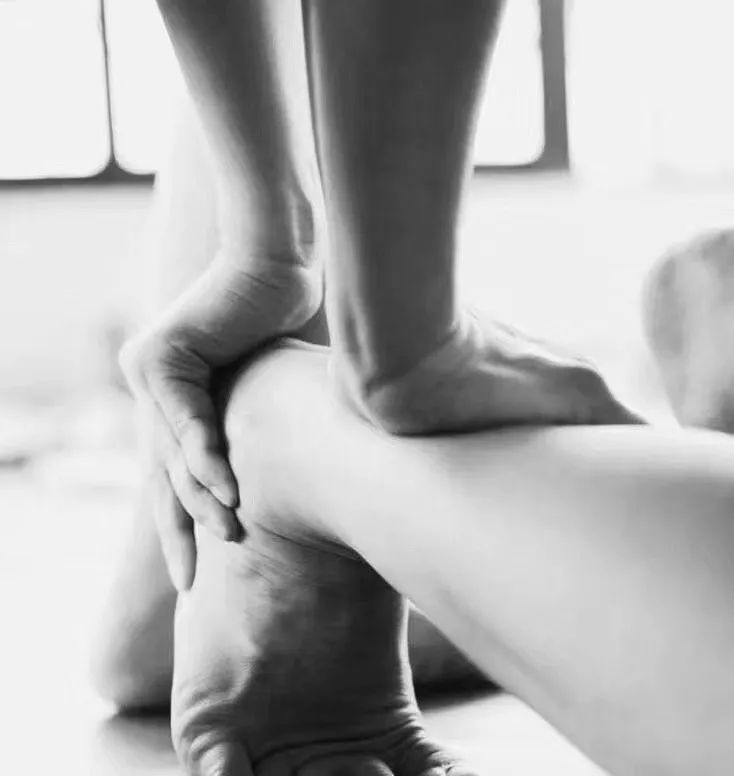Please click the above for free to pay attention to the fact that the two human feet each have 26 bones, 33 joints, 107 heel ligaments and 19 muscles.

This design allows the foot to absorb up to 5 times the weight during running, handle almost all terrain, and have very good endurance.

At present, no robot or other artificial technology can match such performance.

Therefore, the complex composed of foot and ankle can be said to be one of the most complex structures of the human body.

However, when we begin to live in cities, with the development of technology, we use various methods to protect our feet, and excessive protection is actually a kind of injury.

The ankles, soles and toes are restricted, the normal function of the feet cannot be played, the joints are arranged disorderly, and the proprioception becomes dull and distorted.

Many problems arise, such as pronation deformation syndrome, which is the most common in the lower limbs.
This is a general term for a series of defects involving the foot, ankle and leg, which may include the following two or more problems: excessive pronation of the foot, arch collapse, foot valgus, hallux valgus, limited dorsiflexion of the foot, tibial torsion, etc.
From the perspective of human fascia, the instep belongs to the front surface line of the body fascia, and the sole of the foot belongs to the rear surface line of the body fascia.
Many Jia people who cannot bend forward and bend backward may as well try the practice of opening the instep and sole of the foot, which will be of great help to the practice.
1.
Open the instep and the front surface line of the body to help the back bend the instep to compact the mat.
The entire sole of the foot is on the extension line of the calf to ensure that the extension of both sides of the ankle is the same.
Try to extend the five toes.
Then sit your hips on your heels.
If you find it difficult and your instep hurts, you can pad a small towel under your ankle, or lift your hips up to slowly reduce the difficulty.
If you feel relaxed, put foam bricks under your knees and raise them.
In this way, the stretching range of the instep will increase, slowly increasing the difficulty, until the knee is completely lifted off the ground.
Yoga people recommend reading: why do you open the instep in yoga? (attach the method of opening the instep) 2.
Open the sole of the foot, stretch the back surface line, and help the instep to fall to the ground by bending forward, which is equivalent to straightening the toe.
This time, we step on the ground with the front sole of our foot, raise the heel, and make the sole of our foot vertical to the ground, which is equivalent to the toe hooking.
Straighten your upper body with slow exhalation, and sit your hips toward your heels.
Yoga_in: if you find it difficult, you can put your hands on the ground in front of your body and move your weight forward slightly to reduce the pressure on your feet.
Apart from increasing the flexibility of the body and helping the practice of Yoga asanas, opening the back of the foot is also very good for our health.
For example, it can increase the blood circulation of lower limbs and improve the symptoms of cold hands and feet in winter.
It is similar to the familiar foot soaking.
Today, I will share 7 yoga moves to help you “press your ankles and open your back” deeply.
After practicing, you must not miss it! – Action 1, – feet, legs together, knees kneeling, toes stepping on the ground, hips sitting on heels, hands above thighs, shoulders sinking, back straight, perineum, core slightly retracting tailbone to the ground, stay for 1-2 minutes – Action 2, – exit from the upper one, instep on the ground, right hand on the side, left hand on the left knee, exhale, center of gravity to the right, pull left knee up, inhale, restore, exhale, Change the other side to practice alternately from left to right, repeat 10-15 times – action 3, – mountain standing, bend your hips and knees into the magic chair, put your hands together in front of your chest, push and exhale with your palms and heels, tighten the core, repeat 10-15 times with your feet alternately on tiptoe – action 4, – keep the prepared position of action 3 exhale, tighten the core heels while standing on tiptoe for 3 seconds, and repeat 10-15 times – action 5, – keep the prepared position of action 4 inhale, Keep the tiptoe posture: stand up and exhale, bend the hips and knees, squat down on tiptoe and repeat the exercise for 10-15 times – action 6, – sit ready, inhale with both hands on the back of the hips, lift the hips off the ground, exhale with the left toes on the ground, move the knees forward slightly, repeat for 10-15 times, and then change to the other side – action 7, – enter in the individual pose, keep the toes of both feet pressed and tighten the core, and slowly approach the hips to the heels to repeat the Yoga for 10-15 times, Change yourself slowly in each exercise!..

